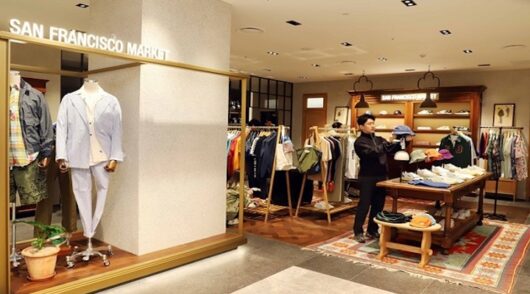Blockchain and robotics are becoming increasingly popular in the global fashion industry as brands look to increase transparency and improve efficiencies, according to GlobalData.
While it is still in its infancy, blockchain technology has the potential to transform the global supply chain, says Michelle Russell, apparel correspondent at GlobalData. She says that during the last few years, the adoption of blockchain technology amongst apparel and textile companies has grown substantially as the pressure to have more visibility in the supply chain ramps up.
“Its uses are varied as companies use the ledger to address problems in unethical behaviour, excess waste, the origin of goods, and counterfeiting.”
German start-up Retraced recently launched a blockchain-based transparency solution that it is trialling with a number of fashion brands. Other examples include OpenSC which received US$4 million in seed funding for its platform that aims to build transparency around commodities known to have significant environmental or human rights risks within their supply chain and Waste2Wear’s launch of the world’s first ocean plastic-based fabrics collection that is fully traceable using blockchain technology.
“Blockchain is undoubtedly helping the apparel and textile industry overcome many of its problems,” continues Russell.
“While still in its infancy there are undoubtedly many bumps to be ironed out, such as the need for common standards and regulations. However, despite the challenges, the increased adoption of blockchain shows there is a need for this type of technology in the industry and its potential is substantial.”
Integrating robotics
Meanwhile, apparel brands are beginning to realise the benefits of integrating robotics in their supply chains as a way of improving their speed-to-market, says Hannah Abdulla, also an apparel correspondent at GlobalData.
“To meet consumer demand for accessing the latest trends more quickly, we’re seeing brands using robotics, which allows faster and greater output, as well as higher efficiencies in warehouse operations.
“Of course, critics may argue such technology could lead to a reduction in manpower but, if the appetite for apparel and footwear continues to grow and demand for the latest trends continues to intensify, brands will be left with no choice, but to harness robotics.”
Adidas recently announced it was deploying Speedfactory technologies at two Asian suppliers, enabling accelerated speed-to-market, and quicker response time to trends, a shift to mass personalisation, efficiency and greater sustainability. In a similar move, the Japanese owner of Uniqlo, Fast Retailing, has employed two robotic start-ups to help improve efficiencies in warehousing and distribution.
“In today’s world, speed is everything,” adds Abdulla. “Consumers want access to the latest trends and they aren’t willing to wait. Employing robotic technologies in some areas of your supply chain can bring you one step closer to delivering on that front.”






